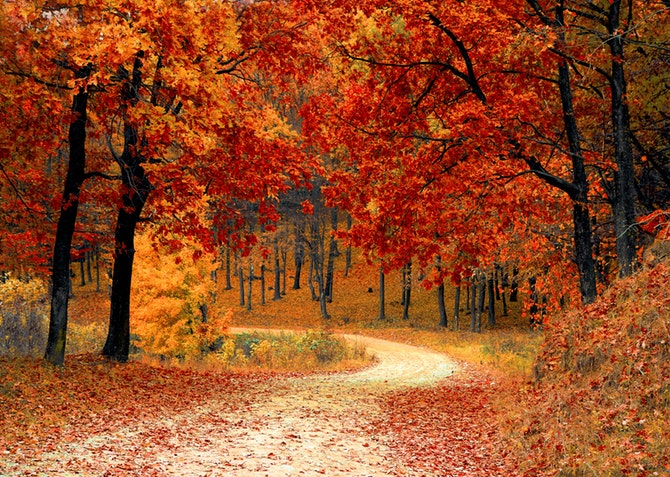 |
‘The Masque of the Four Seasons’, Walter Crane
|
In this post, I'll talk about the novel The Bluest Eye from an archetypal perspective. By definition, an archetype is "an original pattern or model" (Guerin et al) and in literary analysis, an archetypal approach looks for patterns in a text that are similar in many other texts. In the novel, a very prominent archetype is that of the four seasons.
Autumn:
 |
| Taken from ReikiInfiiteHealer.com |
First of all, the book is divided into four parts and each part is named after each season, starting from autumn and ending with summer. The archetype of autumn has a symbolism of tragedy and the first section of the book is definitely tragic. Morrison highlights the development of self-hatred in the young Black girls in the book, Freida (10 years old), Claudia (her sister and main character, 9 years old) and Pecola, a 12-year-old girl who was even poorer than Freida and Claudia and came to live with them after losing her family home when her father raped and impregnated her.
Winter:
 |
| From ABCnews.com |
In part two, winter, this tragedy culminates with a complete death of the girls' self-esteem and self-love. As the archetype winter is strongly associated with death, this all makes sense. A new student came to their school, Maureen Peal, who came from a rich "coloured" family. She was an embodiment of all the seasons:
"There was a hint of spring in her sloe green eyes, something summery in her complexion, and a rich autumn ripeness in her walk." (Morrison, 62)
Her winter coldness came when she, after pretending to befriend all three girls, declared that they were "black and ugly" and she was "cute"(73). This coldness shocked the poor girls and basically led them to settle into the idea that truly, they were worthless.
The winter coldness of The Bluest Eye is so heartbreaking, but what is even worse is that this is not even the most traumatic section of the book. In spring, the girls continue to face hardship. Spring is supposed to represent birth and new life. Spring is when the flowers grow. What seemed to grow instead was self-hatred, self-awareness that they would always be seen as inferior.
Spring:
/cdn.vox-cdn.com/uploads/chorus_image/image/59083075/GettyImages_870527424.0.jpg) |
| Getty Images |
Spring begins with Freida going through puberty, "springing" new body parts and as such becoming a victim of sexual abuse. (99) It also showed the blossoming of Pauline and Cholly's love, as well as its tragic end. Morrison used the concept of spring to show that yes, children will grow, but they will grow the way they are nurtured. From the abuse Pecola's parents suffered and were "watered with", they too grew and bore the same fruit: an unwanted, unloved child with no concept of how to love herself.
Summer:
 |
| Art by Aaron Reed |
Finally, in summer, which represents new life and romance, Pecola is found out to be pregnant and the timing of the novel catches up to its beginning. Freida and Claudia, in a desperate attempt to save Pecola's baby, plant seeds in their yard and hope with the growth of the seeds, Pecola's baby will have a chance at life. However, Claudia reveals:
"...we had failed her. Our flowers never grew...I had planted them too deeply...so we avoided Pecola Breedlove---forever." (Morrison, 205).
She does not find a new life or love. Instead, she loses the baby as it is born prematurely, has a mental breakdown, and envisions herself with the blue eyes she has wanted for so long.
The powerful archetypes of the seasons in this novel really showed me how racism and hatred are taught. They are a cyclical system, like the seasons that come and go every year, and it is only by planting new seeds of love and acceptance, and nurturing those seeds, that any change can come.



/cdn.vox-cdn.com/uploads/chorus_image/image/59083075/GettyImages_870527424.0.jpg)


Your posting illustrated how beautiful a literature analysis could be. Hope someday I can write like that.
ReplyDelete